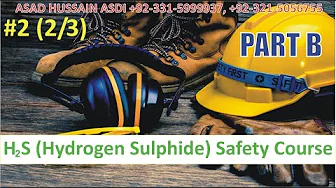GRP/GRE Pipe Lamination Techniques Training course in Islamabad In Pakistan (Rawalpindi, Peshawar)
GRP/GRE Pipe Lamination Techniques Training course in Islamabad
GRP is used for ballast water pipes, but GRE is used in seawater pipelines. These two kinds of pipes are used more .Lamination is the combination of two or more films or sheets of paper, normally held together with adhesives, to make a composite. Laminations can be used in several applications, often for functional purposes, for making a sheet of paper thicker and stronger. Laminations can also be used for producing a specialty product, providing a combination of paper properties for producing a new category of product. However, there are a large number of alternative types of laminations. Each different type of lamination yields a product with different properties. Finding the right type of lamination depends on the desired characteristics and the budget. Paper to paper lamination is the most basic type of lamination.
What is GRP Pipe Lamination Techniques?
GRP Pipes or Glass Reinforced Plastics pipes are composite material pipes consisting of a polymer matrix that is reinforced with glass fibers. They have very high corrosion resistance ability and are thus used widely for low-temperature corrosion-resistant applications. In recent times, The GRP pipes are slowly replacing the steel in various services like fire water services. At the same time, GRE or GRP pipes can withstand high pressures. In many places, the term FRP is used interchangeably for GRP pipes. In this article, we will explore an overview of GRP Pipes.
What is GRE Pipe Lamination Techniques?
Glass reinforced epoxy (GRE) piping systems are used for demanding clients operating in the Marine & Offshore, Oil & Gas and (Petro)chemical markets. GRE is often used for utilities such as cooling and fire-fighting systems where the requirements for reliability and mechanical strength are high. The superior axial and circumferential mechanical values distinguish themselves positively from other, glass fiber reinforced piping systems.
Characteristics of GRP/GRE Pipe:
-
Corrosion resistance: Corrosion resistant to both inside and outside corrosion. As a result, additional linings and exterior coatings are not required.
-
When the ratio of strength per unit of weight is considered, fiberglass composites surpass CS and SS.
-
Lightweight: Fiberglass piping is only one-sixth the weight of steel products and 10% the weight of similar concrete products.
-
Electrical properties: Standard fiberglass pipes are nonconductive. Some manufacturers offer conductive fiberglass piping system for transporting fluids like Jet Fuel.
-
Dimensional stability: Fiberglass material meets the most stringent material stiffness, dimensional tolerance, weight and cost criteria.
-
Low maintenance cost: Fiberglass piping is easy to maintain because it does not rust, is easily cleaned and requires minimal protection from the environment.
Benefits of GRP/GRE Pipe:
-
Long life; highly durable.
-
Low maintenance cost.
-
High Corrosion resistance.
-
Low lifecycle cost.
-
No need for catholic protection.
-
Less transportation and handling cost.
-
Environmental friendly.
-
Wide application range.
-
Economic when compared with DSS pipe (Duplex stainless steel).
-
Strong and Lightweight.
-
Hydraulic efficiency.
GRP Pipe Usage:
-
Fire fighting mains pipes.
-
Cooling water lines.
-
Effluent lines.
-
Sewerage and drainage lines.
-
Process water pipes.
-
Water purification pipes.
-
Ballast water.
GRE Pipes usage:
-
Plant piping.
-
Plant process piping.
-
Oil & Gas flow lines.
-
Offshore platform applications.
-
Sewage piping/desalination plants.
-
Down whole tubing and casing.
-
Engineering services.
Types of GRP pipe:
-
Filament winding.
-
Centrifuge.
-
Continuous winding or Drostholm Method.
-
Helical Filament winding.
Types of GRE pipe:
-
Polyester.
-
Epoxy.
-
Other materials.
Mode of Study:
-
Online Training (Through Zoom).
-
Recorded Training Lectures.
Materials Provided:
Course participants will receive:
-
Study outline.
-
Workbooks and practice problems.
-
Suggested resources and study aids.
-
Past Papers.
-
Guidance on areas where you need additional preparation.
****** For Registration & Information ******
For Free Video Lectures Click Here












